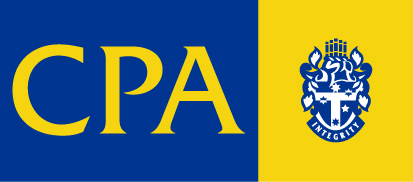As a result of the impacts of the COVID-19 pandemic on commercial enterprise within Australia, the federal government introduced temporary relief for financially distressed companies to assist them to navigate this crisis. Among other things, this included:
- temporary relief to company directors from personal liability for insolvent trading claims; and
- increase the thresholds relevant to the issuing of creditors’ statutory demands against debtor companies:
- making them applicable only with respect to debts greater than $20,000; and
- allowing debtor companies 6 months to respond.
This temporary relief ceased on 31 December 2020. However, it has been followed by the commencement of the Government’s new insolvency reforms in accordance with the Corporations Amendment (Corporate Insolvency Reforms) Act 2020 (Cth) (Act).
Context for the Reforms
It was claimed by some that the insolvency regime (as it existed prior to the current reforms) was a “one-size-fits-all” system, which imposed the same duties and obligations, regardless of the size and complexity of an administration. It was felt that the voluntary administration system lacked flexibility for small business and was therefore unsuitable. It has been argued that the complexity, rigidity and costs of the voluntary administration regime prevented small businesses from engaging with the system early, thus limiting their opportunity to survive.
What are the Reforms?
The Act covers some key aspects, including:
- providing a formal debt restructuring process of eligible companies;
- extending temporary relief to companies intending to undertake a formal debt restructuring process; and
- simplifying the process for eligible companies in a creditors’ voluntary winding up.
These reforms came into effect as of 1 January 2021.
The Simplified Debt Restructuring Process
The new simplified debt restructuring process seeks to assist small businesses, their employees and creditors. It allows these companies to access a streamlined process whilst allowing their directors to stay in control. Is a replacement of the voluntary administration regime for small businesses.
To be eligible, the company must:
- be registered with ASIC;
- have total liabilities less than $1 million on the day that the company enters into the process, excluding employee entitlements;
- formally acknowledge by resolution that the company is insolvent or likely to become insolvent at some future time, and that a restructuring practitioner should be appointed; and
- appoint a small business restructuring practitioner to oversee the restructuring process.
To be eligible, the company must not:
- previously had a restructuring practitioner appointed; or
- already be under external administration.
Once appointed, the restructuring practitioner will oversee and assist in the generation of a debt restructuring plan and proposal, setting out all of the company’s creditors, how much they are owed, and how they are proposed to be repaid.
Safe Harbour
The legislation has extended the temporary insolvency relief, including to the directors of eligible small businesses against insolvent trading claims for a period of up to three months from the day the company declares its intention to access the simplified restructuring process.
Simplified Liquidation
The Act has also provided a new system to simplify the liquidation process for the winding up of an eligible company. To be eligible, the following criteria applies:
- the company has passed a special resolution to voluntarily wind up the company;
- the directors of the company must give a report to the liquidator concerning the company’s affairs and confirm that the company is eligible;
- the company must be insolvent;
- the liabilities of the company must be less than (currently) $1,000,000;
- the company will not be able to pay its debts in full within a period of no more than 12 months after the day of the “triggering event”;
- the directors of the company must not have used the simplified process before;
- the company’s tax lodgements are up to date.
Among other things, the simplified process removes the following formal requirements, easing the costs associated with a liquidation, including the requirements concerning:
- the provision of formal reports to ASIC;
- the convening of meetings of creditors;
- the appointment of committees of inspection; and
- the appointment of a reviewing liquidator.
The process also seeks to:
- limit the ability of a liquidator from recovering what would otherwise be unfair preference payments against creditors not related to the company, by:
- reducing the “relation-back period” to 3 months; and
- precluding a liquidator from pursuing payments less than $30,000 in value; and
- simplify the process concerning the lodgement of creditors’ proofs of debt and dividend payment.
In order to be effective, the simplified liquidation process needs to be adopted within 20 business days from the day of the triggering event (i.e. the date of the special resolution was made to voluntarily wind up the company. The simplified liquidation process will not be available to companies should a liquidator fail to properly notify the company’s creditors at least 10 business days before the simplified liquidation process is adopted. Finally, if at least 25% in value of the company’s creditors request the liquidator not to follow the simplified liquidation procedure, then it will not be adopted.
Conclusion
It remains to be seen what effect these reforms will have in practice. It is intended that the regime will achieve a simplified, cheaper, and more efficient process to assist small businesses, providing a better opportunity to restructure during the current economic climate, thus supporting their business, employees, and creditors.




